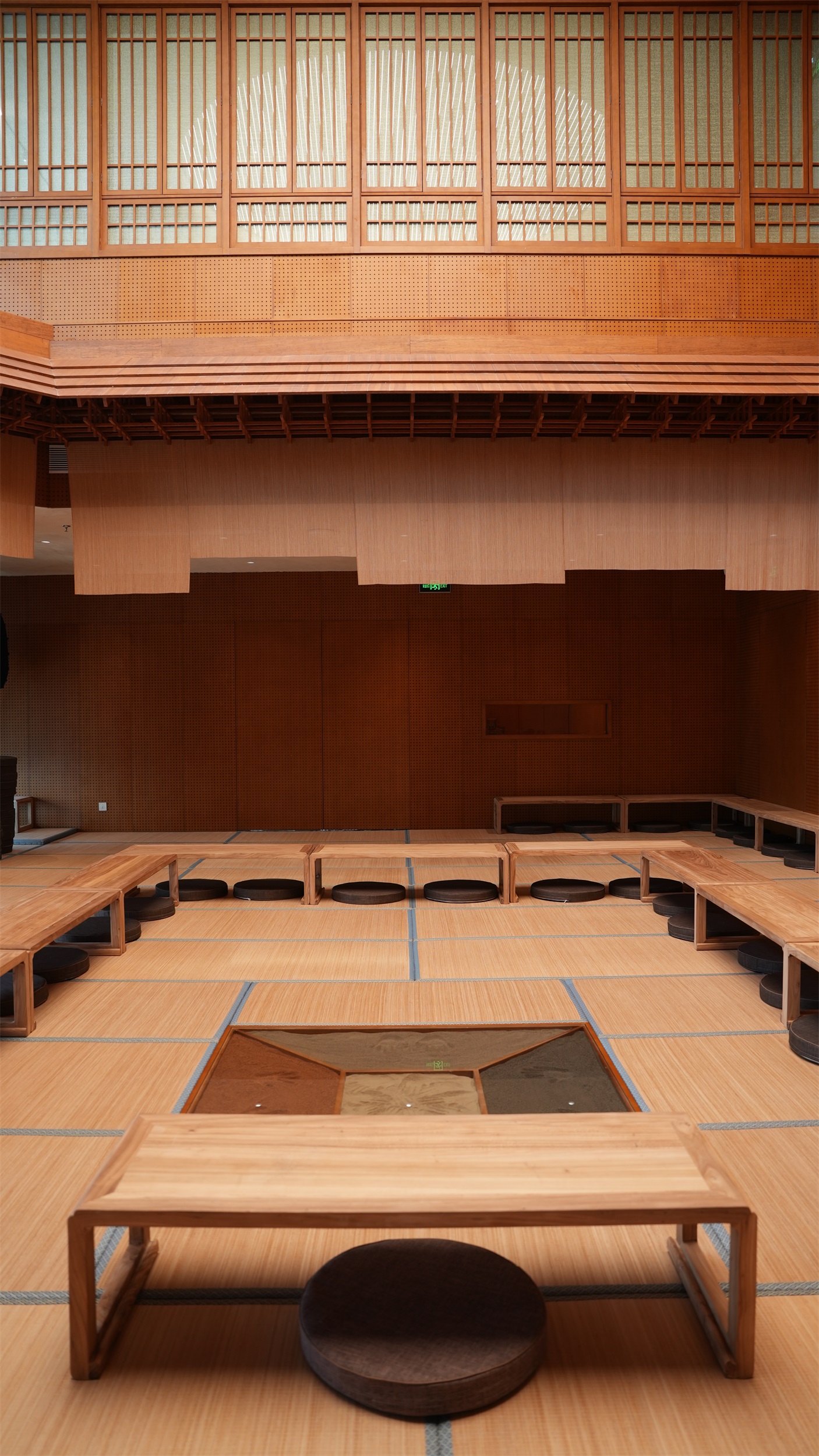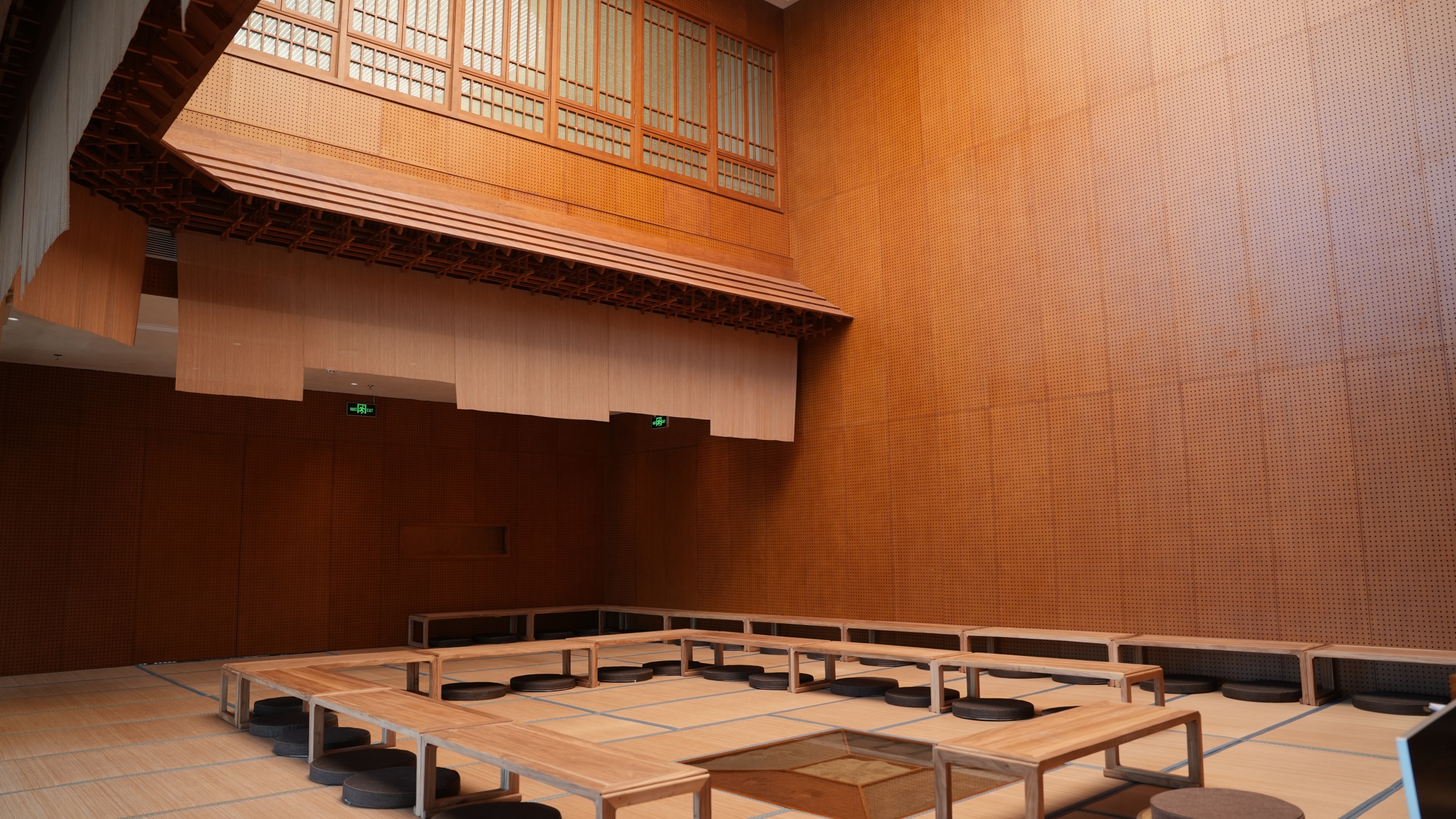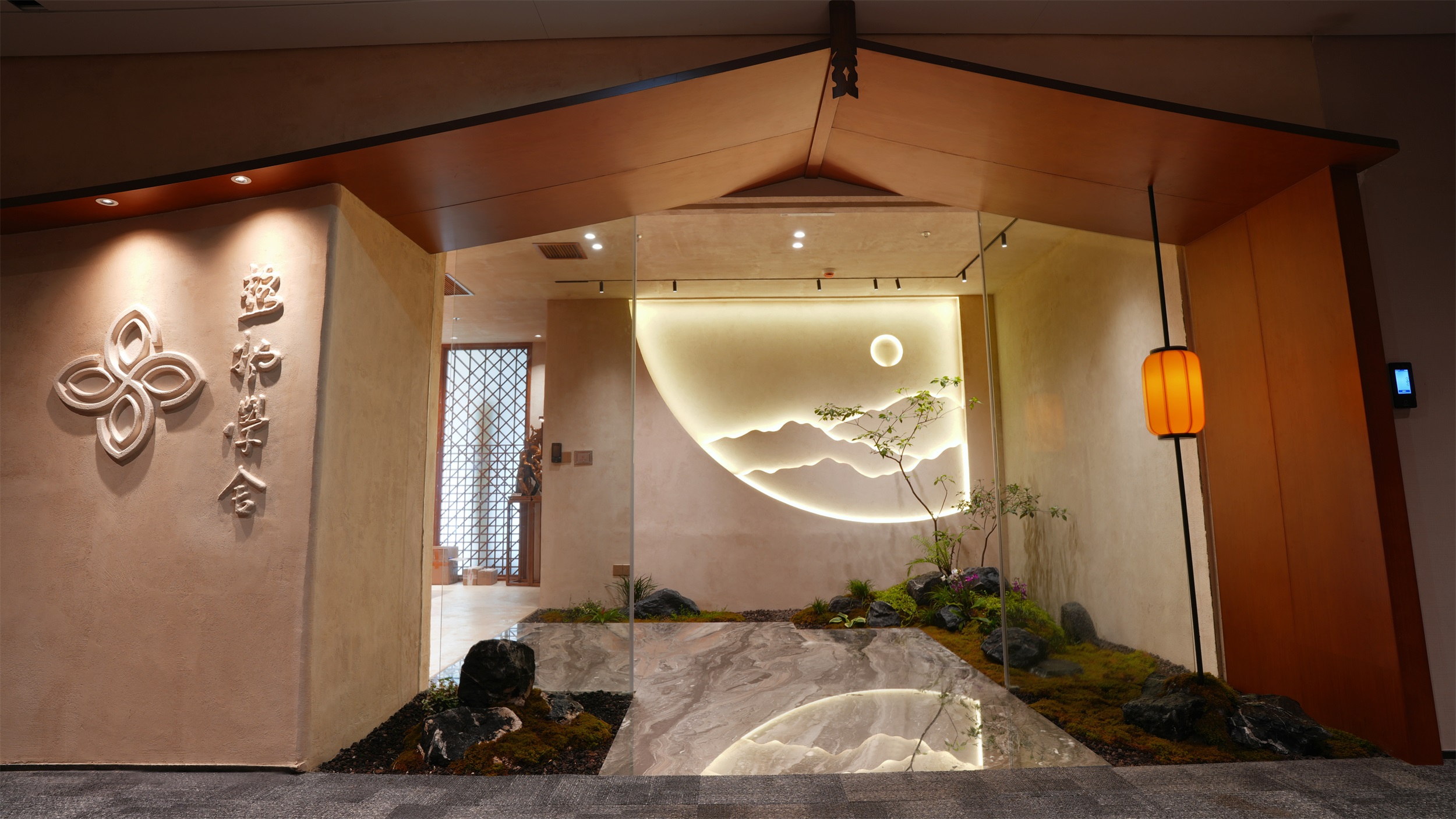
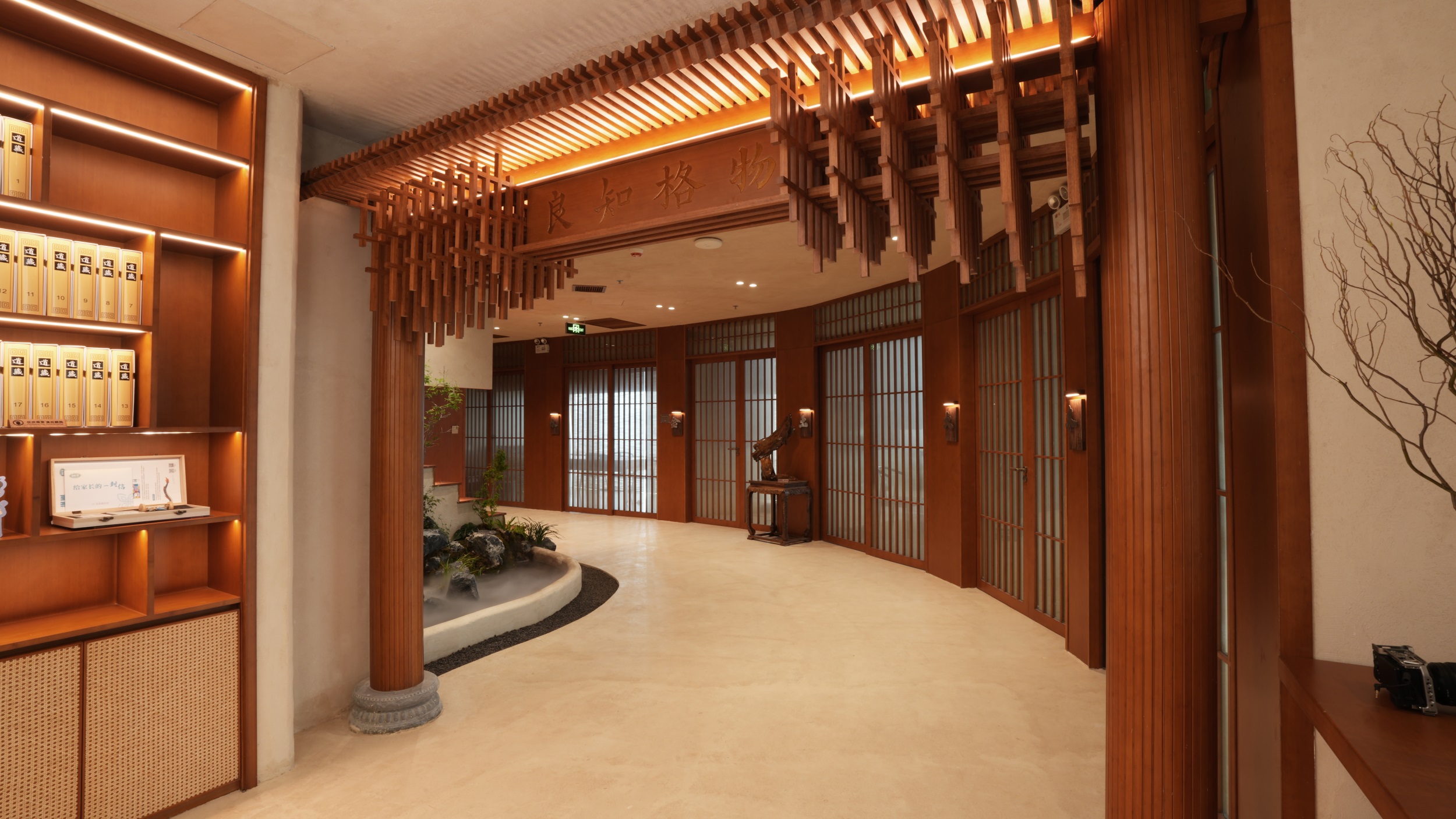
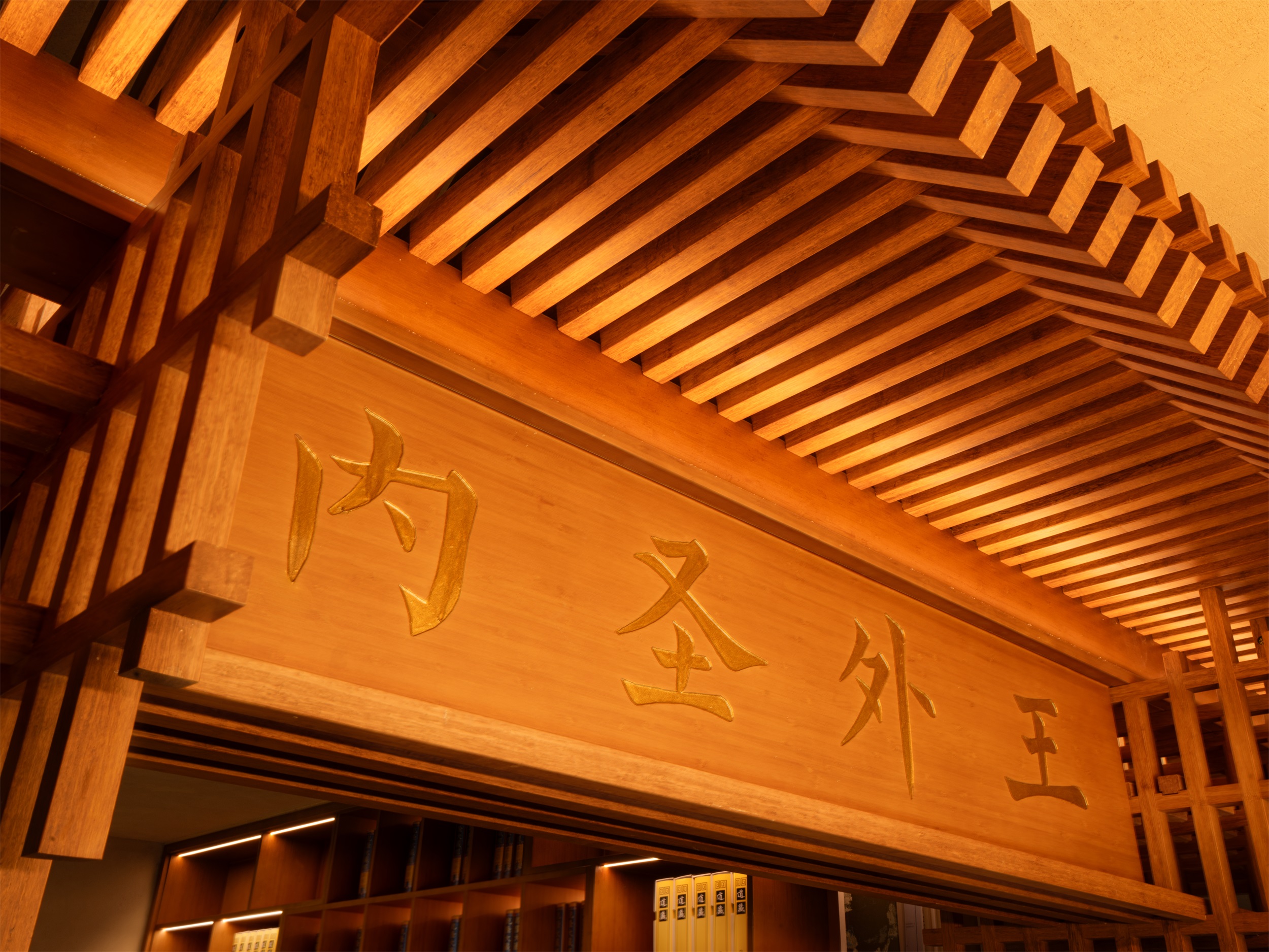
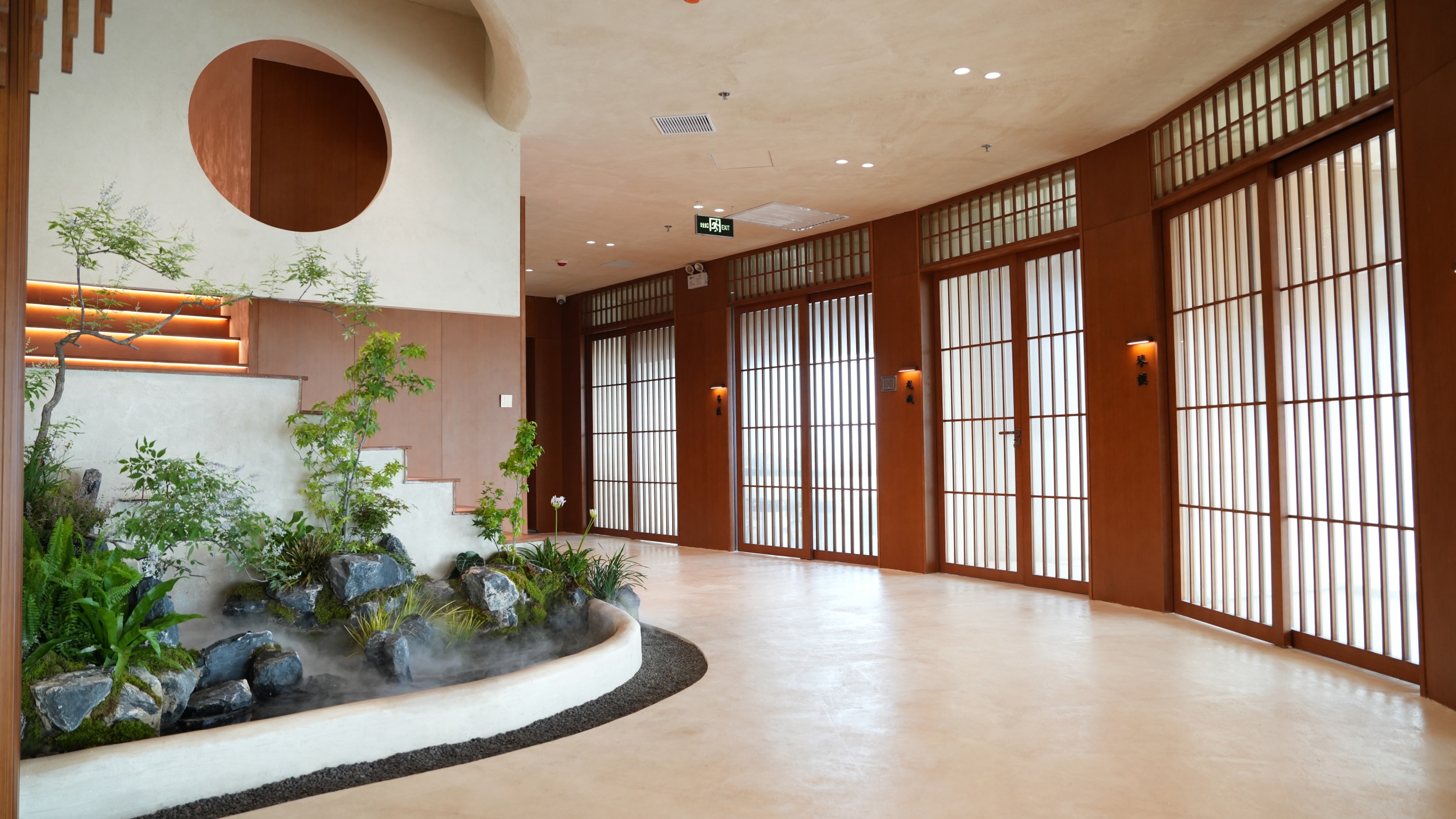
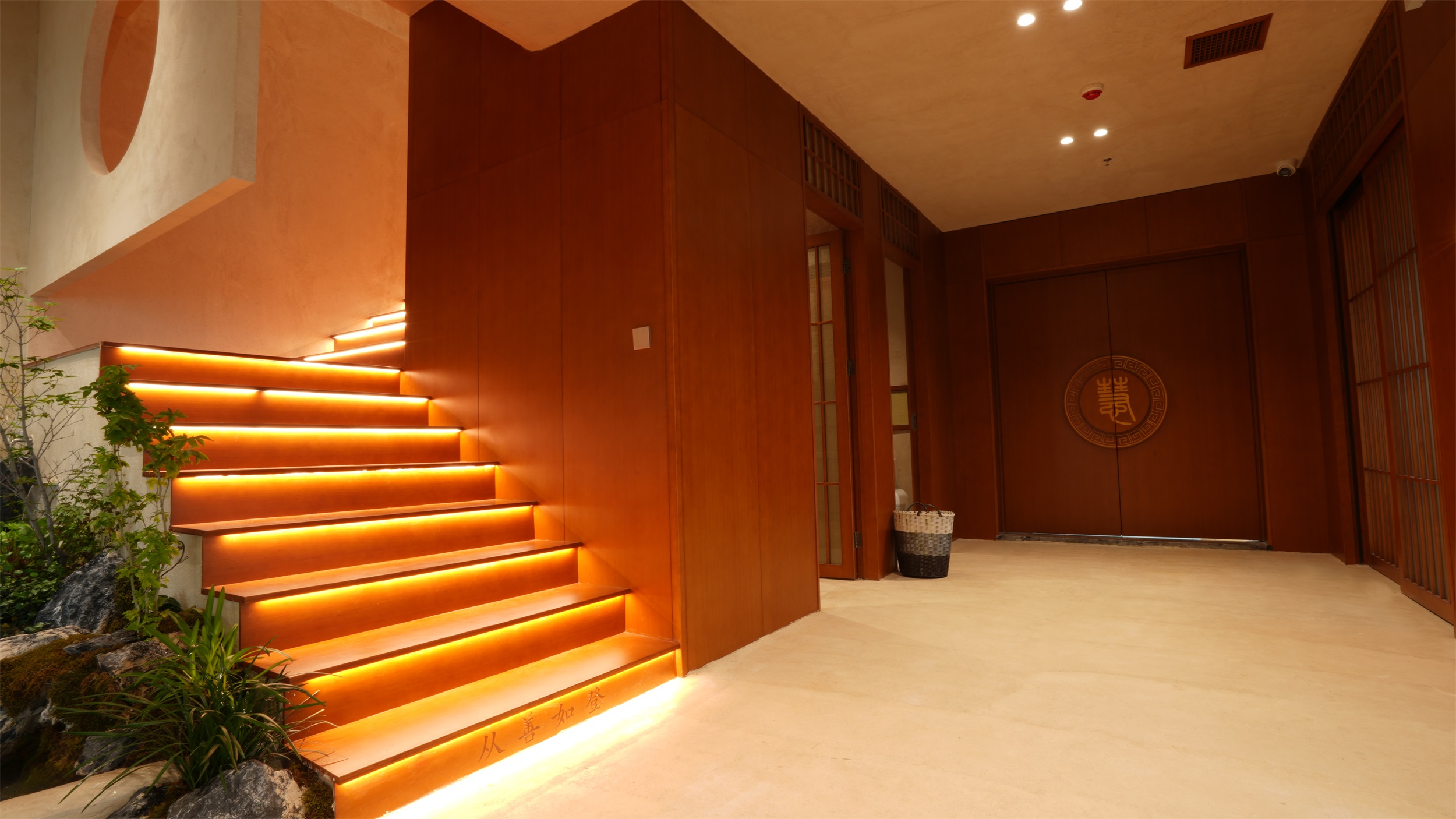
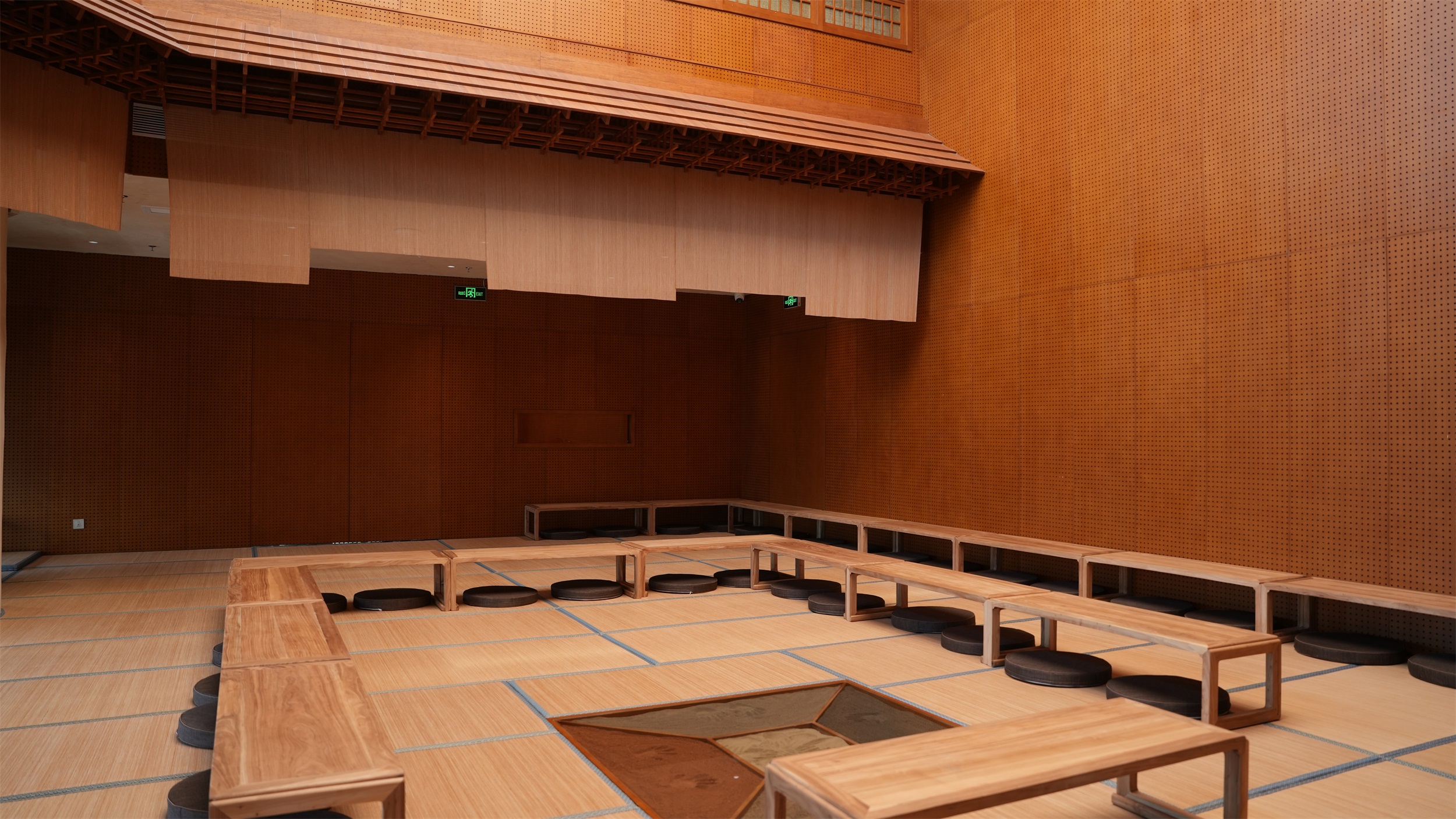
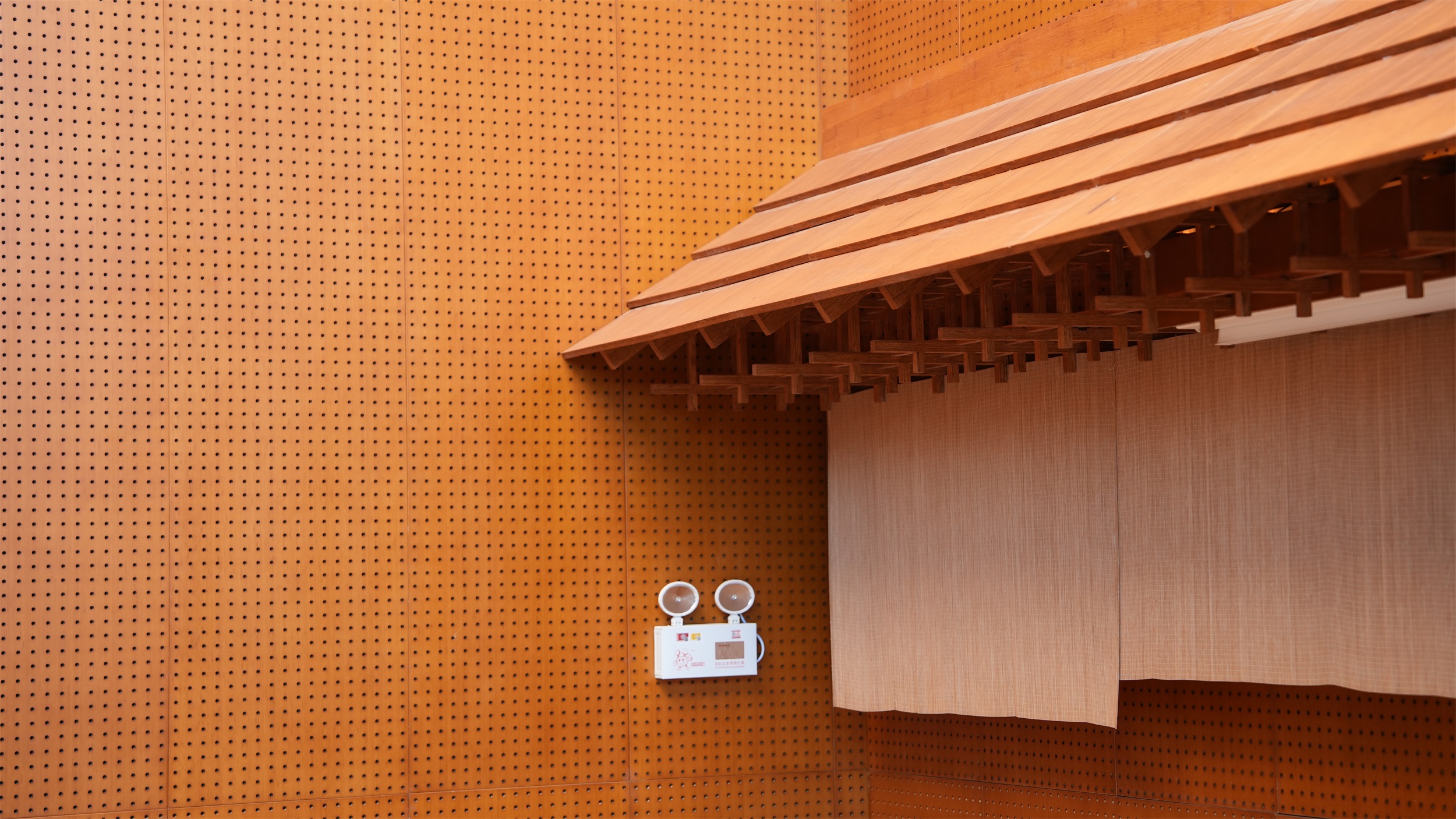
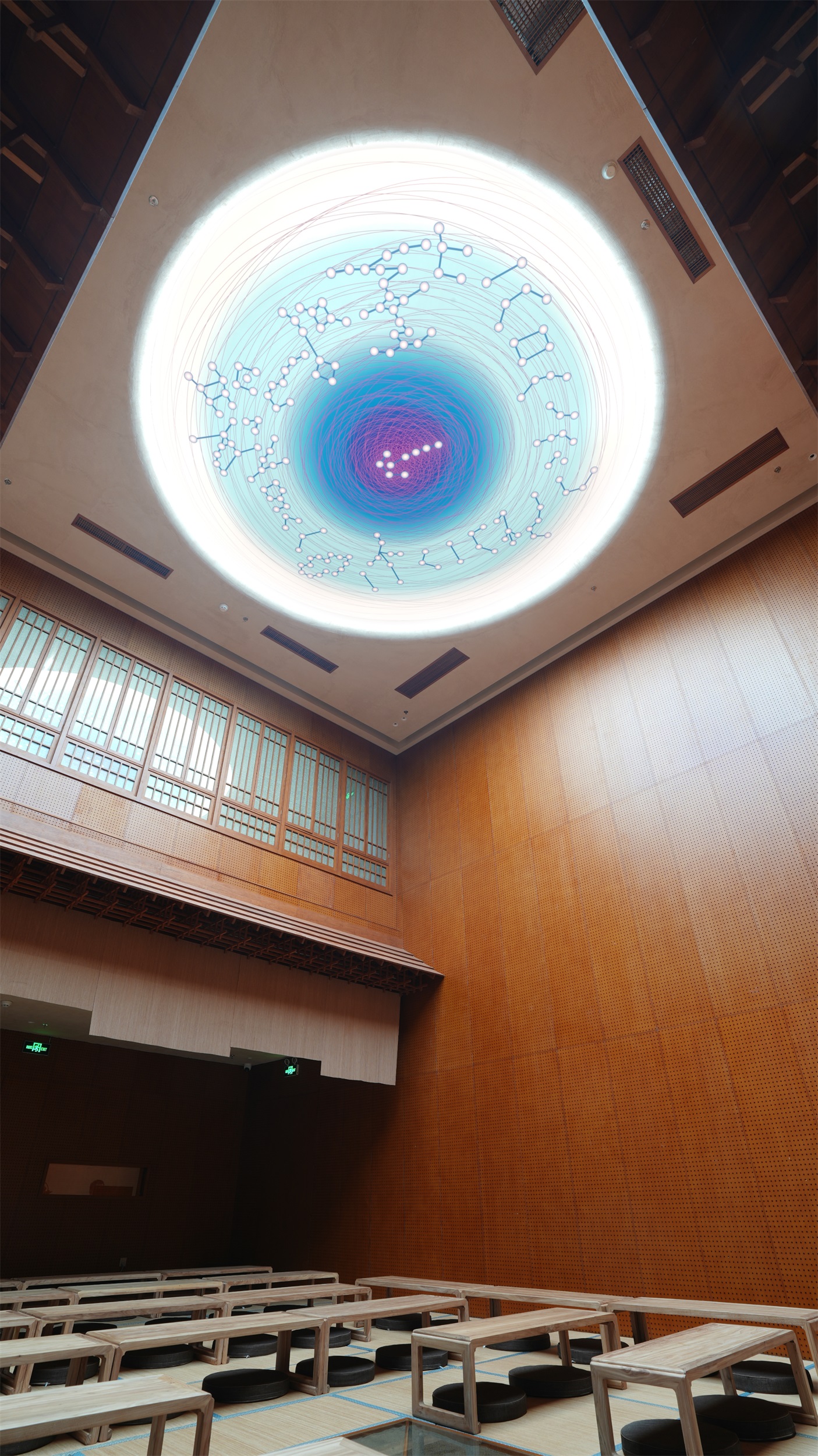
Project Overview
Gewu Study House is a cultural and educational space designed to guide individuals in mindful practice, aiming to promote self-awareness and physical-mental balance through the philosophical principles and practical methods of traditional Chinese culture.
Located on the top floor of a high-rise office building in Shenzhen’s Bay Area, the space features a core practice dojo and independent functional rooms organised according to the traditional Chinese Five Elements philosophy (Metal, Wood, Water, Fire, Earth). The building adopts a double-layer structure, with primary functional areas concentrated on the first floor, while the second floor is accessible via a staircase system, leading to a loft and corridor within the dojo space.
Project Commissioner
Dongfang Gewu (SZ) Culture & Tech Co., Ltd.
Project Creator
Dongfang Gewu (SZ) Culture & Tech Co., Ltd.
Project Brief
The entire design strictly adheres to traditional Chinese philosophical thought and modern spatial design principles, with the core focus of creating an immersive environment that fosters inner peace and supports physical health for its visitors.
All design materials are sourced from nature and crafted using completely harmless traditional techniques. For instance, all pillars, walls, and surface coatings for floors are constructed using the traditional Chinese sticky rice mortar technique, infused with natural soil particles sourced from five regions of China (East, West, South, North, and Central). These soils, due to regional differences, possess distinct negative potential characteristics.
Under the catalysis of light and water vapour, they spontaneously generate a pyroelectric effect, continuously releasing negative oxygen ions, with concentrations ranging from 20,000 to 80,000 per cubic meter-over ten times higher than typical office spaces. This system leverages the synergy between natural materials and environmental factors to create a comfortable sensory experience akin to being in a pristine forest.
Project Innovation/Need
The dojo is the heart of the space, embodying profound design wisdom and philosophical concepts. Its ceiling features Asia’s largest single-unit natural spectrum lighting system, with spectral characteristics that closely mimic natural sunlight, effectively regulating the human body’s circadian rhythm to promote relaxation and enhance focus.
The surface of the lighting fixtures is engraved with the core symbols of ancient Chinese astronomy and astrology, the Twenty-Eight Constellations diagram. These constellations were not only crucial for ancient stargazing and calendar-making but also symbolise the energetic connection between humanity and the cosmos.
Directly beneath the light source, the floor is adorned with five differently colored soil samples—green, red, white, black, and yellow, corresponding to the Five Elements philosophy (Metal, Wood, Water, Fire, Earth), representing the energy distribution of the earth.
With the Twenty-Eight Constellations above and the Five Elements below, a harmonious structure is formed, resonating between heaven and earth: the ceaseless movement of the stars above and the continuous cycle of the Five Elements below. This design not only reflects the ancient wisdom of “the unity of heaven and humanity” but also makes the flow of energy within the space tangible and perceptible.
Practitioners sit in meditation around this installation, attuning to the rhythm of natural energy, using it to harmonise their own qi (life energy) with the surrounding environment, gradually entering a deeper, more focused mental state.
Design Challenge
The bamboo curtains used in the dojo are made from special bamboo materials, which not only soften intense light to create a gentle ambience but also filter out harmful ultraviolet and blue light, further enhancing the space’s comfort and safety.
A critical aspect of the dojo’s immersive environment is its unique acoustic design, which posed a significant challenge: achieving a closed sound field effect comparable to or surpassing professional acoustic equipment while strictly using only natural materials. This tested the designers’ ability to seamlessly integrate traditional craftsmanship with modern acoustics.
The solution was an innovative use of bamboo and panel structures.
The dojo’s walls employ a sandwich-style composite structure made of multiple layers of bamboo. The outer layer consists of high-density bamboo panels with numerous precisely arranged acoustic micro-perforations. These perforations are not merely decorative but serve as critical acoustic openings that regulate airflow and sound wave propagation.
They work in synergy with approximately 240,000 litres of internal wall cavities: high-frequency sound waves enter the cavities through the perforations and are absorbed by sound-absorbing materials, while low-frequency sound waves are dissipated through cavity resonance, significantly reducing indoor reverberation time and eliminating echo interference.
This creates a controlled, closed sound field environment. Additionally, the natural humidity-regulating properties of bamboo provide dynamic temperature and humidity buffering, maintaining a relatively stable microclimate without external intervention, reducing physiological stress and enhancing user comfort and focus.
Sustainability
Sustainability is a key consideration in this project, reflected in the ultimate use of natural materials and passive environmental regulation strategies. Situated in the hot and humid region of southern China, Gewu Study House employs traditional Chinese sticky rice mortar for its walls, floors, and pillars, incorporating montmorillonite from the five regional soils.
When indoor humidity exceeds 85%, the natural microporous structure of the coating automatically activates moisture absorption, capturing water vapour through hydrogen bonding, with each square meter of wall absorbing up to 1.2 litres of water daily, keeping surfaces dry and preventing mold growth. When humidity drops below 40%, the stored moisture in the coating’s crystal lattice is gradually released through thermal motion, contributing approximately 0.3 litres of moisture per cubic meter daily, naturally restoring humidity to a comfortable 50%–65% range. This system relies on the inherent properties of materials and their responsive synergy with environmental changes, creating a humid yet comfortable microclimate akin to a pristine forest.
Testing shows that this system completely eliminates condensation during the “return to the south” phenomenon. Compared to spaces with conventional latex paint, humidification energy consumption during the air-conditioned season is reduced by 47%, significantly decreasing reliance on modern electrical appliances like air conditioners and dehumidifiers. This approach achieves efficient, stable, and low-energy microclimate regulation through natural means, embodying a sustainable design logic rooted in the essence of materials.
Interior Design - International Co-Working & Studio Space
This award celebrates innovative and creative building interiors, with consideration given to space creation and planning, furnishings, finishes, aesthetic presentation and functionality. Consideration also given to space allocation, traffic flow, building services, lighting, fixtures, flooring, colours, furnishings and surface finishes.
More Details


